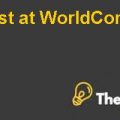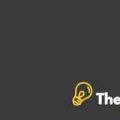
Case- International Finance Case Solution
Dollarization in Ecuador Outline
What is Dollarization?
Dollarization is a situation where a country officially or unofficially uses the currency of any other country for the routine transactions. Dollarization takes place when a country is facing economic crisis and takes benefit from the stability of another country’s currency over its own currency. This is a situation where the country is not able to influence the monetary policy by money supply. Dollarization occurs in developing countries where central government is weak and unstable. Countries choose such a currency for their transactions, which has been stable in the past such as Dollar and Euro.(Investopedia, 2015)
Brief History of Ecuador in Political and Financial policy.
Ecuador has been suffering from political instability since many years, however, in actual their departments and structure are weak. Weak institutions tend to weaken the country overall.Due to the corruption caused by the political leaders in the country, it created to the economic problems in the country. Military coup has taken place in Ecuador for about four times in the history. Within the time period of 13 years, around 8 prime ministers changed, which indicates that the volatility in the political system is too high. Ecuador's political parties have historically been small, organizations have been loose that have been dependent more on the population, and often the leaders are retained to support on the programs or ideology. Frequent internal splits have produced great factionalism. In the 1996 election, the local population forfeit edits traditional policy. The local population established itself as a force in Ecuadorian politics, and participated in the Gutierrez’s administration before joining the opposition.(Carniegge, 2011)
Ecuadorian elites saw the economy as a zero-sum game, which led to the economic crisis. Many Ecuadorians were deluded with democracy after the 25 years of corruption. One of the root causes of Ecuador's economic and democratic crisis was Ecuador's corporatism structure, which allowed the country's elites to capture majority of the country's wealth. Various groups attempted to steal the power and wealth from the government of the country. Poor education among the general population, and common attitudes, such as leftist tendencies that tend to place the blame on the US, enabled the country's elites to get away by stealing the country's wealth. Judicial corruption was also used to control the country's resources.(Wikipedia, 2001)
Ecuador's currency and the system of control (pegged, fixed etc.)
The Ecuadorian Peso was renamed Sucre on March 22, 1884, and was firmly placed on the silver standard. Sucre was defined as 22.5g fine silver (equivalent to 5 francs of the Latin Monetary Union.) Substandard coins were withdrawn from 1887 to 1892, with only high-quality silver remaining in circulation. The fall in the international price of silver accelerated in the 1890s. On November 3, 1898, Ecuador switched to the gold standard, with Sucre comprising as 732.224 mg fine gold (equivalent to 2 shillings sterling).
It was finally stabilized during 1926, and on March 4, 1927 Ecuador went on the gold exchange standard, with Sucre equal to 300.933 mg fine gold or US$0.20 (a devaluation of 58.8%).The gold exchange standard was suspended on February 8, 1932. Exchange controls were adopted on April 30th and the official rate was fixed at 5.95 (buying) per U.S. dollar. After the price of silver increased more the nominal value of most silver coins in the 1930s, Ecuador embargoed the export of silver (May 17, 1935).(Wikipedia, 2001)
History of the country's exchange rates against the dollar and graph of this. (Graph needed)
In exhibit 1, it can be seen that Ecuador’s currency, Sucre,was stable from the year 1960 till 1984 whereas, the graph shows that after 1984, the currency was devalued against dollar due to the political pressures and this was the situation until the option of dollarization was adopted in the year 2002. (top, 2013).........................
This is just a sample partial case solution. Please place the order on the website to order your own originally done case solution.










